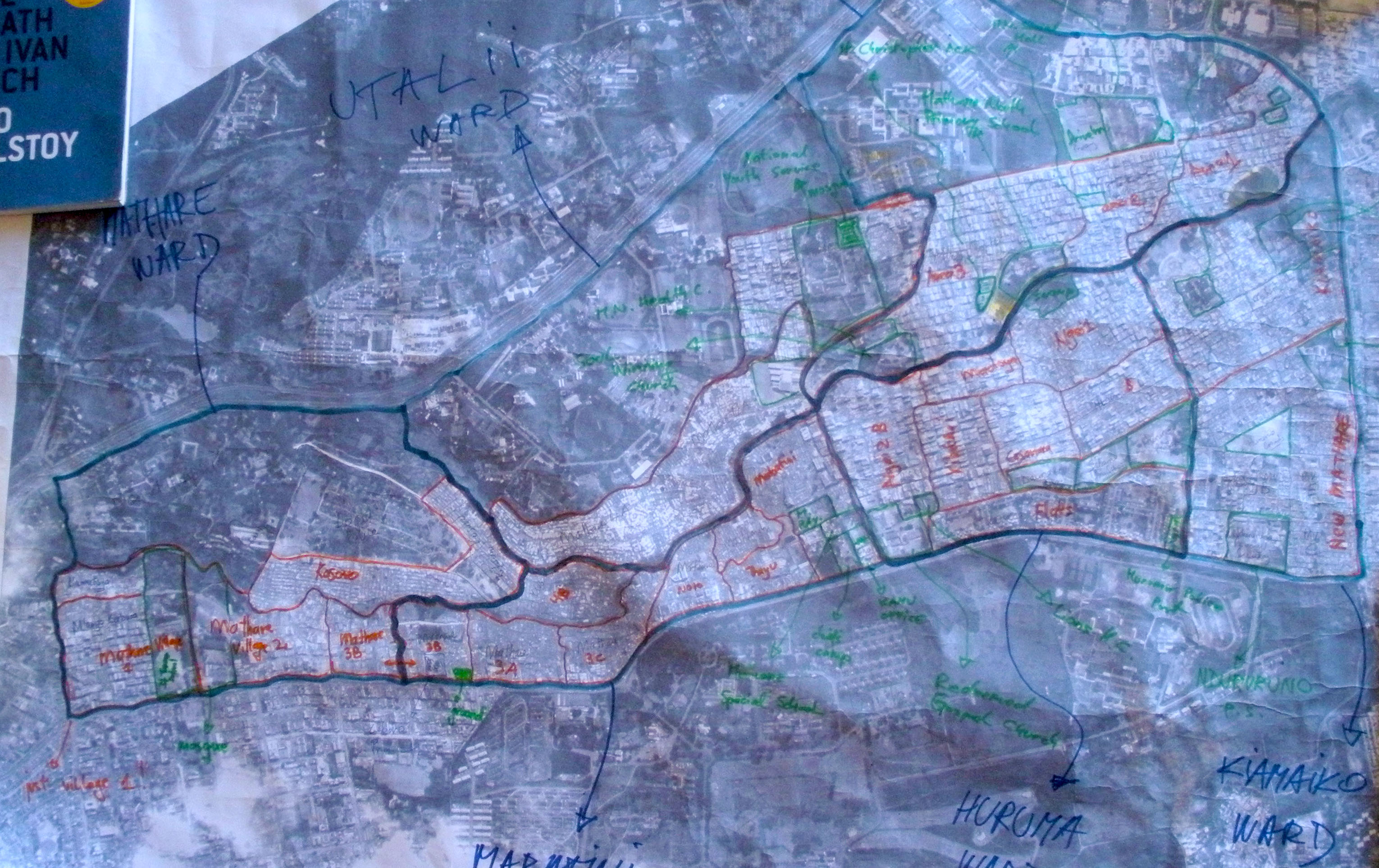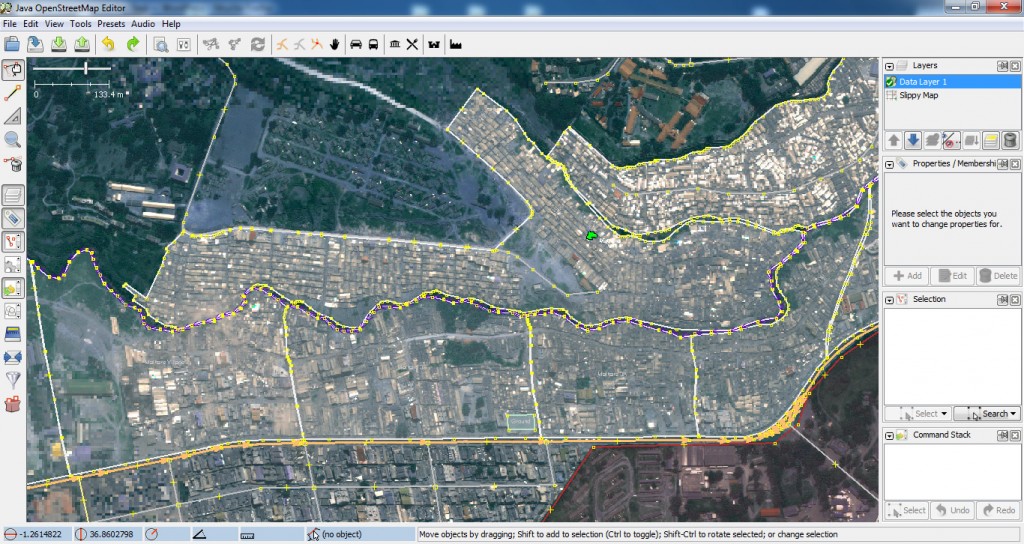To follow up on what Mikel wrote in his post called Map Kibera has become a Research Subject. Happily!, this is the situation on the ground at the moment.
While Mathare is approaching with fierce speed the Kibera teams are working hard to set up the Trust, struggling to create their basic visions and missions, developing their personal goals, thinking of ways to get their work across into the community (something that hasn’t been done yet) and preparing to train others. Working on two fronts is going to be, well let’s say challenging.
But how much excitement and effort can we really expect from our teams to do something we feel is good, maybe even good for them? When asked what their vision, mission and goals are all I hear is the mantra they picked up along the way about how they want to contribute to open data and sharing of information and being the eyes and ears of the community etc. But do they really know and understand what this means or are they just repeating something they were told is good? After all they are going to be the messengers to their communities and based on their messages the communities will react. We say we’re doing this to see how open data can influence the marginalized communities to better advocate upon themselves. But what do they want out of this? I know people have been trying to answer these questions before but it’s somehow different when confronted with faces in front of you, it’s much more personal.
On our meetings I challenge them and ask them what their personal goals are. What do they want and expect from the programs? Do they want to volunteer in these programs forever? What are they doing to distinguish themselves from the thousands (if talking of You Tube millions) of others who are doing the same? When asked this question they usually answer that they want to get paid or get paid jobs, be famous, travel the world etc – these are real dreams, real life goals. And aren’t we doing this so we can empower members of this community to advocate upon themselves and to have a better chance when competing with the luckier and the richer comrades?

Voice of Kibera team
That is why we’re now trying to make them look at what they are doing as a business, a marketing of their skills. They need to sell their ideas and their talent. They have the opportunity to do that through the programs they are involved with. They can still be the eyes and ears of the community and still influence change but they also need to think about the sustainability of the programs which will be achieved only if they are satisfied with what they are doing.
So the discussion in the past week has been how to raise awareness about Map Kibera’s programs while putting the skills and ideas of the three groups on the market.
The Map Kibera teams are planning several activities to achieve this goal:
The Mappers will raise awareness through Atlas distribution. They plan to do this through a publicity gaining “Atlas launch†to which they plan to invite government representatives, NGOs, UN representatives, community leaders etc. They will ask for small contributions which will be used to print more maps. They also want to distribute the Atlas and hold lectures in schools of Kibera, identify public places to post maps, start public discussions regarding the data collected by organizing community meetings, and they even plan to start a discussion regarding naming the streets in Kibera. Last but not least they want to re-do (update) the map.
The video team wants to start weekly public screenings to showcase their talent and present their work to the community and hopefully start discussions around the stories and events they collect.
Voice wants to set up stands and distribute flyers and stickers to publicize the number.
All of them want to train others. It’s serious stuff and hopefully something good comes out of it! And while the Kibera teams are thinking hard about all these issues, Mathare is like a bee hive, full of expectations, ready to go to the moon. The venue for the forum is reserved and people are being invited.

Mathare
The forum will take place on December 1st and will last about half a day. We’ll start with introductions from Rose and Simon (CCS and COOPI). CCS will than facilitate “mapping with the feet” , a participatory exercise that asks participants to place themselves within a room with relation to their geographical position in the community in question, to show the participants what mapping is in the simplest of way. The Kibera teams will then present what they did in Kibera and invite people to the stands where they will showcase the equipment and methods and answer more questions. In the end we will open the stage for discussion.
Anyhow it’ll be interesting couple of months. At the moment there are more questions than answers, but hopefully by the end the tide will shift.
Oh… by the way, Mikel and Erica left. Sorry for us.



